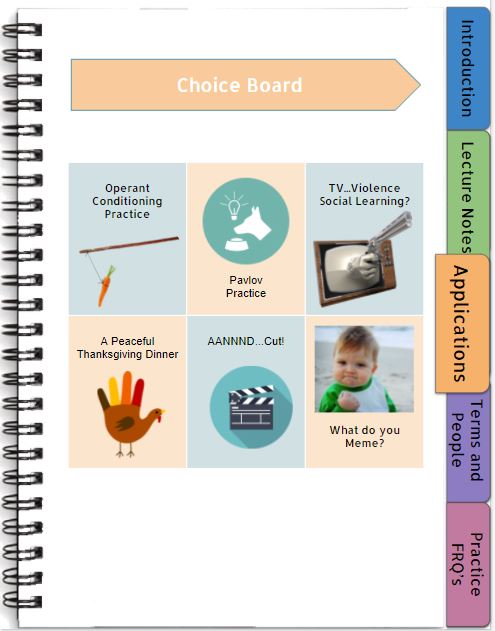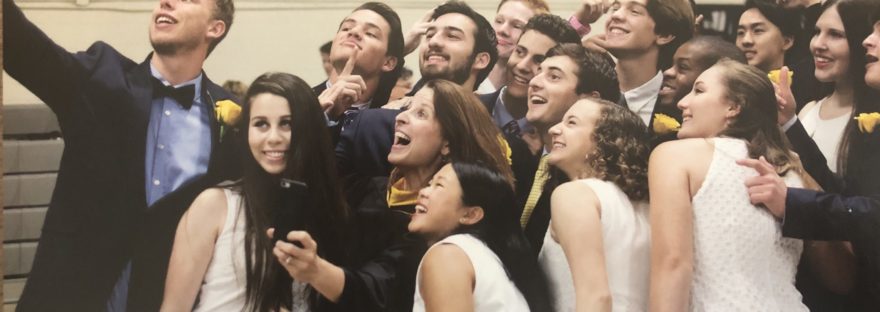We all want to feel confident in our craft, especially when it comes to counseling others through tough times. When most of our time is focused on our clients, it’s easy to forget that we need to continue growing. This is a space where I will honor our need to take care of ourselves whether it be through introspection or information. I hope you find these posts helpful to your growth.
Continue Growing Blog
The F Word
Atychiphobia: the fear of failure. I like having an uncommon word to describe something so common. Granted, atychiphobia is the dysfunctional fear of failure; it keeps a person from trying anything new. Although most people aren’t considered atychiphobic, it’s been my experience that people, especially adolescents, tend to be failure-avoidant when it comes to taking healthy risks.
Young children aren’t afraid to take risks or to be wrong. They are innovators by design. It’s how they learn. But something happens as our children enter middle childhood and adolescence; they begin to think that being wrong is not okay.
There are many great quotations about the value of an epic fail. However, I am particularly fond of this one because it reminds me that failure is critical to creativity. Sir Ken Robinson, an author and, more importantly, an education reformer, in his 2006 TEDTalk says that as a culture, we have created a stigma around making mistakes, being wrong, failing. He goes on to say that this stigma around failure is disastrous because “if you’re not prepared to be wrong, you’ll never come up with something original.” Wow.
I’m not a perfect parent. From time to time, I will share some of my failures in that department with you. One thing I believe I am doing well is letting my children experience the distress of failing. Whether it happens on the soccer field, in a chess match, or in the classroom, I am confident that that experience can foster the desire to improve. I can do this because I know these failures are safe ways for them to build resilience. In the world of educational psychology, we call it “grit.”
Dr. Angela Duckworth at University of Pennsylvania and her team of graduate students have done considerable research to define key predictors of success. Grit, basically, is “passion and perseverance.” It’s the determination to see something through, to stick with it and continue to work toward a long-term goal until you reach it. Being resilient means that a failure doesn’t constitute the ending of the work; it is the start of something that could be even better.
As parents, counselors, good human beings, it is our job to foster a growth mindset in our children. Dr. Carol Dweck, author of Mindset: The New Psychology of Success, argues that success comes from our ability to persist and learn rather than the ability to get things completely right the first time. How can we help our kids feel safe to take risks/potentially fail? It’s called autonomy-supportiveparenting. When we provide our kids with the sense that they are competent to solve problems by not solving problems for them, but sharing guidance instead; when we provide our children with parameters, but don’t direct their choices, they will be invested in the outcomes rather than just pleasing authority. Because that is where the fear of failure is born and intrinsic motivation dies.
While it can be scary for some parents to consider the words failure and school in the same breath, consider this: school should be a safe place for kids to take risks and challenge themselves. School is a laboratory and our children should experiment; take a course that is outside his or her comfort zone, start a new club, or simply make an announcement in assembly. Accepting the challenge is what creates the grit. Autonomy-supportive teachers create those safe environments for creative thinking and when/if a student “fails,” those teachers acknowledge the effort, or maybe the lack thereof, and provide more opportunities.
There’s another F-word that applies here: feedback. What would it look like if failing was always seen as feedback? An opportunity to do some creative problem-solving? A low grade on a test or a paper offers a student a moment to reflect on how he or she earned the grade. It provides an opportunity to talk with a teacher to learn how to improve. Feedback isn’t always kind; it’s not always packaged as care and concern. Kids who have developed that grit described above are much better equipped to accept feedback and not be discouraged to keep trying. The real success is growth and maturity.
But let’s not romanticize failure or sugarcoat it. Success doesn’t always mean that we are going to reach the goal we originally set out to achieve. It could be the realization that our goal needs some tweaking.
Another quotation that speaks to grit is by a man who overcame many obstacles to become one of the most important innovators in American History. Thomas Edison reminds us that “many of life’s failures are people who did not realize how close they were to success when they gave up.” We need people who dare to fail many times until they find a success.
We’ve all been there. We’ve all experienced failing. How did your failure support your success?
Under Construction
How often do you look at teenagers and wonder, what happened? Is this child insane? Adolescence is much like that saying — building the plane in midair. They are in control of a massive piece of machinery, but they don’t have a pilot’s license. We often treat teen-aged children as if they are small adults, but they aren’t equipped to act that way.
“Adolescent” and “teenager” are no longer synonymous. For decades, researchers in the fields of psychology and sociology have been rethinking “the teen years.” Historically, we considered adolescence to mark the time of puberty; generally ages 12-18. As science has advanced — both social sciences and natural sciences — we have learned more about how we navigate this most important developmental period.
Adolescence has gotten longer. The onset of puberty is around age nine for most kids, typically three years before the outward signs of puberty begin. We’ve always thought of adolescence as the hormonal roller coaster; that a teenager’s most important job was to weather the storm of mood swings and risky behavior until the calm of adulthood settles in. The shift in how we view the time period of adolescence is most notably in brain development. What we’ve learned about how all that grey matter gets organized has given us a greater understanding of why kids do what they do.
Brain science makes it easier to define adolescence. This period is the most extensive in brain development. The brain “grows” most during birth to age three when connections are being made and milestones are being met. But adolescence is when those connections take hold and become efficient and better organized. Two major areas of the brain are hard at work during adolescence: the limbic system and the prefrontal cortex. This begins around age nine, the onset of puberty, and is complete around age 25, our new understanding of the end of adolescence.

A developmental mismatch. The limbic system is the brain’s emotional center, responsible for regulating the experience of emotions. The most important function of the limbic system is to motivate us to act. It turns out that the limbic system revs up around age 15, long before the prefrontal cortex: the brain’s center for the ability to exercise self-control and think through the rewards and risks of decisions. This part of our brain isn’t strong until the early 20’s. So, during adolescence, emotions are stronger than the ability to manage them. The limbic system motivates us to act before the prefrontal cortex can think it through. This is when parents often question if their child was switched at birth, and school counselors wonder how in the world these children will make it to graduation.
No wonder it looks like they are insane. The stark contrast between middle childhood and adolescence can be blinding; they are capable of many independent activities, but we need to remember that they don’t have the ability to act as rational adults! Educators and school counselors are in a unique position to co-pilot the plane if we understand why teens think the way they do and do what they do.
What can you do? Adolescence is the perfect time to focus on developing those connections — the brain is in re-organizing mode. Help teens think through the consequences of their decisions. Consistent feedback (not criticism) and the opportunity for reflection will help solidify the connection between behavior and outcome. Prompting an adolescent to think deeply about himself or herself and how he or she impacts others is one of the best tools for learning, and developing empathy — a critical skill for anyone.
There are some great books out there to help adults understand more about the experience of adolescence. These are two that I have found very helpful:
The Teenage Brain by Amy Ellis Nutt and Frances Jensen, MD
Age of Opportunity by Laurence Steinberg, PhD
Both of these books offer insights and practical information to decipher the insanity.
Why Restorative Practice Makes Sense
My journey to school counseling was a wonky one; it was never my goal. I was quite comfortable in my private practice supporting families and children. There is a satisfaction in witnessing a family struggle through a crisis, coming out stronger in the end. I enjoyed my work as a parenting coach of sorts, teaching families how to engage with their children in ways that would prevent crises. When I decided I would go “back to school,” I didn’t realize how much I would learn.
Several years ago, I participated in a training on restorative practice. The International Institute of Restorative Practice’s definition of restorative practices includes the “use of informal and formal processes that precede wrongdoing, those that proactively build relationships and a sense of community to prevent conflict and wrongdoing.” Our school had begun to develop a Philosophy of Discipline, and we were looking for structure to add some weight to our policies. Self-Determination Theory (SDT), the grounding of Heart of Character, is the foundation of our work with the children and families who make up our school community. Belonging, autonomy, and competence absolutely have their place in our discipline philosophy.
Restorative practice just makes sense. The training was full of “aha” moments for me, and I quickly saw how closely restorative practice aligns with both SDT and my own practice as a counselor. In my work, I often focus on prevention. Children thrive in environments where they feel authentic connections to the adults around them; when these connections are healthy, we can always manage any mistakes that happen along the way. An ounce of prevention is worth a pound of cure…or punishment.
A true feeling of belonging in a community is critical to restorative practice. Most of restorative practice is proactive in building authentic relationships among children and adults because we are all more likely to respond positively to authority when there is a relationship of trust and a sense of belonging. These happen when adults are able to communicate the impact of a behavior rather than assigning blame, set boundaries, and teach empathy. Restorative practice is intentional, explicit, and often intuitive.
Likewise, the principles of fair process are critical to restorative practice. To build trust and commitment with children, we must give them autonomy by involving them in the decisions that affect them. We need to listen to their opinions, and explain our rationale behind any decision to those affected. This creates a feeling of competence and voluntary cooperation.
What about when things go wrong, when a rule has been broken, and discipline requires a punishment? That is going to happen – they are children. Restorative practice provides a safe opportunity for this meaningful work. Through restorative practice, we show children how to repair any relationships that may have been damaged. Because we have proactively developed relationships, children know they belong. I have seen it and I know it works. Restorative practice is critical to belonging in a community. It just makes sense.
When your focus is providing your students with the essentials of autonomy, belonging, and competence, you are restorative.
Modeling Resilience with Autonomy and Belonging
With the pandemic came the recognition that America’s young people were facing a mental health crisis. Along with this recognition emerged the conversation about resilience. Is there a guidance lesson for resilience? Nope, not one that I’ve found. As a school counselor, I’ve been thinking about the ways my students have been demonstrating resilience every day and how some kids are really struggling to cope. What I see is a direct connection to optimism and autonomy and belonging.
By definition, resilience is the inner strength we need to overcome challenges and negative life experiences. I would define that as a skill and therefore it is teachable and “learnable.” Vaccinations and decreasing death tolls have given us a sense of hope and freedom, that proverbial light at the end of the tunnel. Now that light has illuminated just how much our kids have endured and how they have been asked to hold the emotional impact of a world turned upside down. Our kids were stuck at home with their laptops and iPads replacing the classroom; TikTok and SnapChat replacing the lunch tables and game fields, creating disconnects for which they were not prepared.
I believe my school’s ability to survive this year of hybrid, in-class, and remote learning is rooted in our relationships and the value we place on the community. While this has been hard on our teachers and our students, our acknowledgment of that frustration has given us opportunities to work through it together. There is no greater protective factor for children than the sense of belonging and trusted relationships within their community. So when children observe adults struggle and recover when obstacles occur, they are learning. And when children and adults struggle together and recover when obstacles occur, it increases trust and belonging.

When there are restrictions placed on so much of what we do, autonomy is like sanctuary. A recent study in the journal Child Development (Neubauer, et. al., 2021) highlights autonomy-supportive parenting, and I would argue, autonomy-supportive teaching, as highly effective strategies for well-being. Teachers who provide their students with a choice in how they learn — with guidelines — are giving their students the chance to own their work and the outcome. Hybrid teaching has forced me to think differently about how I support my AP Psychology students’ education. This year, I provided students with a digital notebook with a “Choice Board.” Within every unit, students are allowed to choose the three practice applications that appeal to them. Each application has standards and a rubric, but the perception of choice about how they apply what they have learned has made all the difference in the world. And it’s a win for me!
I don’t think there will ever be a lesson plan for resilience as effective as adults helping children work through real-world complications in autonomy-supportive ways. When this is our problem-solving strategy, it’s not surprising optimism grows. Every day is an adventure!
Neubauer, A.B., Schmidt, A., Kramer, A.C., Schmiedek, F. A Little Autonomy Support Goes a Long Way: Daily Autonomy-Supportive Parenting, Child Well-Being, Parental Need Fulfillment, and Change in Child, Family, and Parent Adjustment Across the Adaptation to the COVID-19 Pandemic. Child Development, 19 January 2021.

